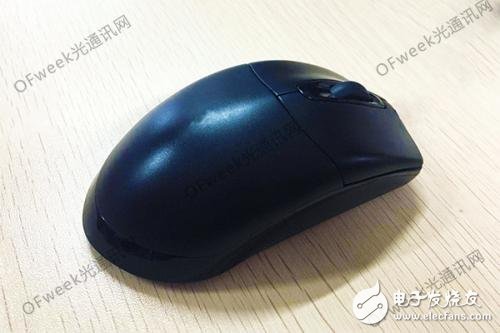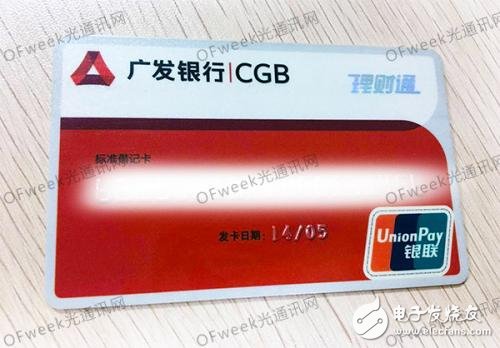Since entering the 21st century, the communications industry has achieved rapid development. People's expectations for large-bandwidth, high-speed, and low-latency communication networks are getting higher and higher. Multimedia content with video, audio, and images as the mainstream has gradually become the main part of streaming media, and the contradiction between spectrum resources and communication capacity has become increasingly prominent. Due to limited spectrum resources and restrictions on the cost of communication construction, low-cost short-range wireless communication technologies gradually show their advantages in some scenarios. Short-range wireless communication technologies such as Bluetooth, Zigbee, and RFID have emerged as the times require. And it has been widely used in the market.
Bluetooth technology-"frequent customers" in portable devicesWhen it comes to wireless transmission, it is easy to think of Bluetooth. Bluetooth headsets, Bluetooth speakers, Bluetooth file transfer, etc. are all very common products and applications in life. In the past ten years, Bluetooth technology has been very close to our lives with its advantages of ease and convenience.

Bluetooth technology was originally created by the international telecommunications giant Ericsson in 1994. It is a wireless technology standard that is mainly used to realize short-distance data exchange between fixed equipment, mobile equipment and building personal area networks. It uses 2.4. UHF radio waves in the ISM band to 2.485GHz. Due to the working principle, Bluetooth technology can realize the connection between multiple devices at the same time, which overcomes the problem of data synchronization.
In principle, Bluetooth is a communication protocol based on data packets, with a master-slave architecture, and uses frequency hopping technology. Specifically, the transmitted data is divided into many data packets, and the data packets are transmitted through 79 designated Bluetooth channels. The Bluetooth master device can effectively link with up to 7 communication devices at the same time.
At present, Bluetooth technology has been iteratively upgraded many times, from version 1.2 with a data rate of only 1Mbits/s to version 4.0 with a data rate of 24Mbits/s, and the transmission rate has been greatly improved. At present, the rise of WIFI technology has caused a certain impact on Bluetooth technology. However, WIFI and Bluetooth are complementary in many aspects. WIFI usually centers on the access point and forms an asymmetric client-server connection with the routing network through the access point. Bluetooth is usually a symmetrical connection between two Bluetooth devices. WIFi is mainly used to replace high-speed cables used in general LAN access in the workplace, while Bluetooth is mainly used for portable devices and their applications. The difference between the two is very obvious.
ZigBee technology-smart home potential stocksZigBee technology is a low-power local area network protocol based on the IEEE802.15.4 standard (2.4Ghz frequency band). It is a short-distance, low-complexity, low-power, low-speed, and low-cost two-way wireless communication technology. It is mainly used for data transmission between electronic devices with short distances, low power consumption, and low transmission rate, as well as typical applications with periodic data, intermittent data and low response time data transmission.
ZigBee is a highly reliable wireless data transmission network, similar to CDMA and GSM networks, and the ZigBee data transmission module is similar to a mobile network base station. The communication distance ranges from the standard 75m to several hundred meters and several kilometers, and it supports unlimited expansion. The advantage of ZigBee lies in its self-organizing network capability, supporting up to 65,000 device networking, with high security and strong potential advantages in smart homes.
In the process of using Bluetooth technology, people found that although Bluetooth technology has many advantages, it still has many shortcomings. For the fields of industry, home automation control and industrial remote control, Bluetooth technology is too complicated, power consumption is too large, communication distance is too short, and the network scale is too small. In addition to the defects in these applications, the high price of Bluetooth is one of the reasons why it cannot occupy the market in the industrial field. It is under this situation that ZigBee technology has gradually won a large part of the market in these fields.
ZigBee is now in a relatively mature stage of development. Due to the vigorous promotion of international giants such as Philips and Osram, more and more mainstream manufacturers have joined the ZigBee camp.
The darling of the Internet of Things—RFID technologyRFID technology, also known as radio frequency identification, can identify specific targets and read and write related data through radio signals without the need to establish mechanical or optical contact between the identification system and specific targets. The radio frequency generally adopts microwave, and the frequency is between 1GHz and 100GHz, which is suitable for short-distance identification communication.
The radio signal is modulated into an electromagnetic field of radio frequency, and the data is transmitted from the label on the article, so as to realize the automatic identification and tracking of the article. Some tags can get energy from the electromagnetic field emitted from the recognizer during identification, and do not need to use batteries; some tags have their own power source and can actively emit radio waves. The label contains electronically stored information, which can be successfully identified within a few meters. Unlike a barcode, the radio frequency tag does not need to be in the line of sight of the recognizer, but can also be embedded in the object being tracked.
With the rapid rise of the Internet of Things technology in recent years, RFID technology has begun to gain a higher degree of attention and is regarded as one of the key technologies for building the "Internet of Things". In fact, RFID technology has a history of more than 70 years. It first originated from the United Kingdom and was widely used by the United Kingdom as a military technology during World War II. By the 1960s, this technology began to be commercialized rapidly.
Although RFID technology sounds a bit unfamiliar to the public, in fact, this technology has already penetrated into our daily lives and is even used every day. For example, passive RFID products, such as bus cards, canteen meal cards, bank cards, second-generation ID cards, and other card products, all belong to the category of close contact identification. In recent years, active RFID products have gradually penetrated into our daily lives, such as applications in smart parking lots, smart transportation, smart cities, smart hospitals, and the Internet of Things.

LIFI technology is also known as visible light communication technology. It uses microchips to make LED lights flash at high speed, and then uses high-frequency light and dark flashing signals from the light source to transmit information. This technology was invented by German physicist Professor Harald Hass, and In 2011, it was called LIFI technology for the first time in a public speech.
Use the LED to send out high-frequency light and dark flicker signals that cannot be seen by the human eye to transmit information. LED lights can achieve millions of secondary flickers per second. The binary data is quickly encoded into a light signal for transmission. The sensor receives the signal, which is the general process of LIFI technology.
Compared with traditional radio frequency communication technology, LIFI has many advantages. Because LED lights are widely used, they can all be used as base stations, which makes LIFI have the foundation for large-scale applications. In addition, LIFI also has core advantages such as high speed and wide spectrum, which can effectively alleviate the global shortage of wireless spectrum resources. However, because LED lights cannot penetrate walls and are easily blocked, this greatly limits their display space.
LIFI technology is very suitable for use in offices and homes, as long as the lights are turned on, high-speed network connections can be achieved. At the same time, it is also very suitable for use in intelligent transportation. Through this technology, traffic lights send road condition information in real time.
Summary: Starting from the application demand side, the four wireless communication methods of Bluetooth, ZigBee, RFID, and LIFI have their own precise positioning and have been widely used in their respective application fields. Perhaps, we do not understand these technologies, but have long been accustomed to enjoying the convenience brought by these technologies. Speaking of technology changing lives, perhaps it should be as silent as they are.
Eye protection:The principle of chlorophyll defocusing is adopted to prevent the eyeball from focusing for a long time, effectively alleviate eye fatigue, and achieve better eyesight protection.
Anti-blue light, ultraviolet light:The Green Light Film can actively filter the target wavelength while providing a band in the range of 380-400nm. It can effectively block 100% harmful light.
Edge coverage:The soft material fully covers the edges of any device, so it can be affixed to curved screen and round edges, 100% provides excellent edge coverage, and there is no gap between the edges of the device.
Oleophobic and waterproof:The oleophobic coating surface of the Green Light Screen Protector can provide your phone with oleophobic and waterproof properties, which can prevent sweat, grease residue, and fingerprints.
Sensitive touch:The 0.14mm ultra-thin film does not interfere with the touch response, almost as if it does not exist. When using a mobile phone, the fingertips can be easily swiped, bringing you a comfortable gaming experience.
Green Light Film,Green Light Screen Protector,Anti Green Light Screen Protector,Anti-green Light Screen Protector
Shenzhen Jianjiantong Technology Co., Ltd. , https://www.jjthydrogelprotector.com